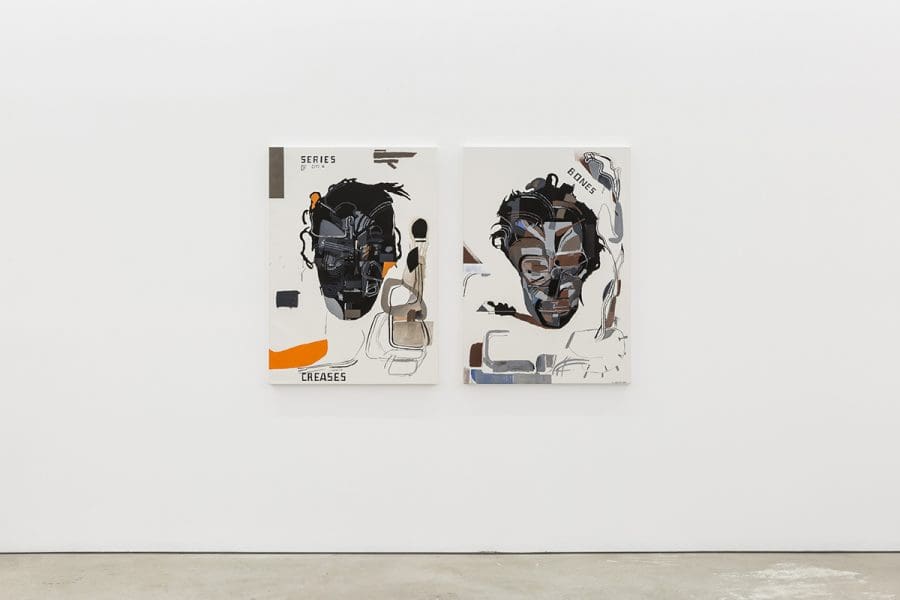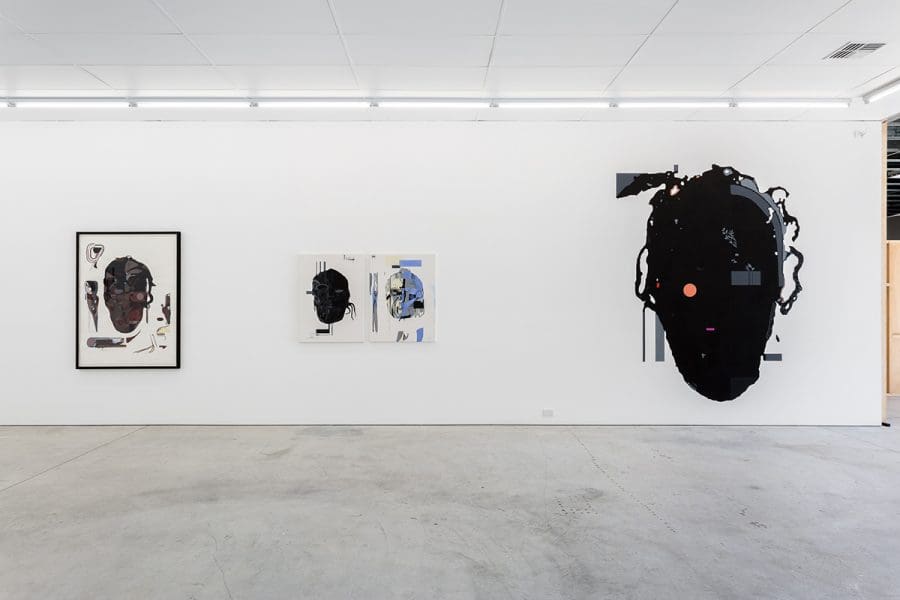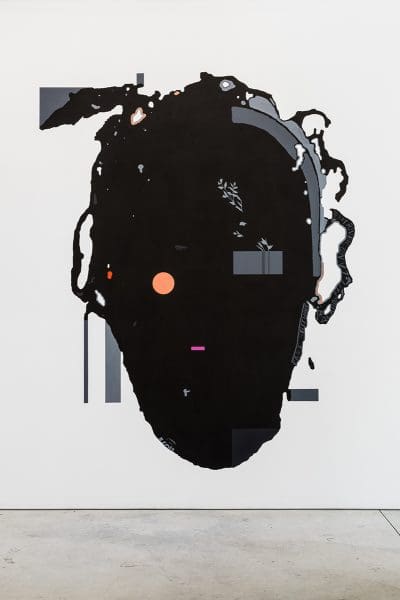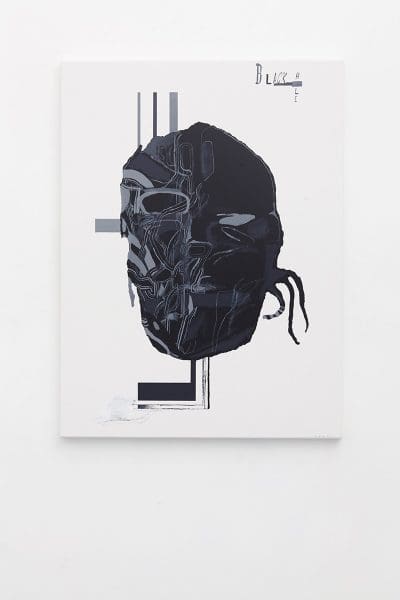
Piercing the veil
A new exhibition at Buxton Contemporary finds a rich complexity in the shadowy terrain between life and death.

Shane Cotton, Series of cuts and creases, 2017, and Shane Cotton, Flat Bones, 2017, installation view. Image by Christo Crocker.

Shane Cotton, Black Hole, 2018, installation view. Image by Christo Crocker.

Shane Cotton, Part River,Part Land,Part Shithole, Black Hole, 2018, install shot. Image: Christo Crocker.

Shane Cotton, Black Hole, 2017. Image Courtesy of the Artist.

Shane Cotton Untitled #2, 2017. Image Courtesy of the artist
Shane Cotton, a New Zealand artist of Pakeha (white New Zealander) and Mãori descent is referred to as a ‘history painter’. He brings together imagery and techniques from both cultures to create surreal paintings with latent narratives.
Black Hole at Gertrude Contemporary consisted of a suite of paintings of black disembodied heads and a wall mural that drew from Mãoridom and cosmic theory. These were exhibited in one of Gertrude Contemporary’s galleries, next door to paintings by the Australian Aboriginal artist Richard Bell.
The show’s intention was twofold – to present Cotton’s new series to a Melbourne audience and to offer an opportunity to reflect on associations between Bell and Cotton’s practices, as Indigenous painters from neighbouring countries.
While Bell, as often quoted, is an “activist masquerading as an artist” and uses the genre of painting as means of protest, Cotton distances himself from politics; he is concerned with creating new forms using Mãori subject matter.
Nevertheless, for Black Hole Cotton chose politically charged subjects. The predominantly ink-black forms in these works are Mokomokai: the preserved tattooed heads of Mãoris. These were often sold and traded with Westerners in the 19th century and have since been subject to reparation, with activists and museum professionals negotiating their return from overseas museums. Cotton has painted Mokomokai in the past, but here they take a central position. Situated in the middle of the canvas they are removed from their worldly and cultural associations; fractured around the edges they pulsate with an electric energy into the surrounding space.
Cotton told New Zealand news site Stuff, “…until now, I would have discussed the heads as being very introverted, but now they have become very extroverted, as though they have opened up. It is just like the painting is describing itself.” In the wall mural Part River, Part Land, Part Shithole, Black Hole, 2018, the face is almost entirely black save for small geometric shapes and an abstracted branch with fine leaves. The outline of the head peters out in the manner of pixelated computer graphics. It’s as if their cultural force has been transformed, pushing the object beyond its original meaning. It still contains the power of Mokomokai, but it is something else.
Text within them described Mãori place names and events, and they were often earthy and dry in tone. In The Hanging Sky, 2012, his characteristic imagery appeared suspended on a background of menacing clouds. And now, they reach further upwards, to cosmic heights. In the accompanying catalogue, New Zealand arts writer Anthony Bryt discusses black holes in scientific theory: a place where information is sucked in and scrambled out. It is here where Cotton’s Mokomokai sit – processed through a timeless and unknown space where the universe possibly originated.
Shane Cotton, Black Hole, Gertrude Contemporary, from 2 February to 10 March 2018.